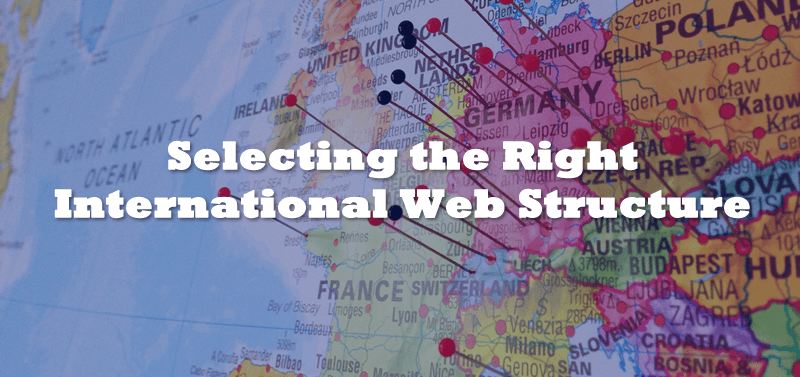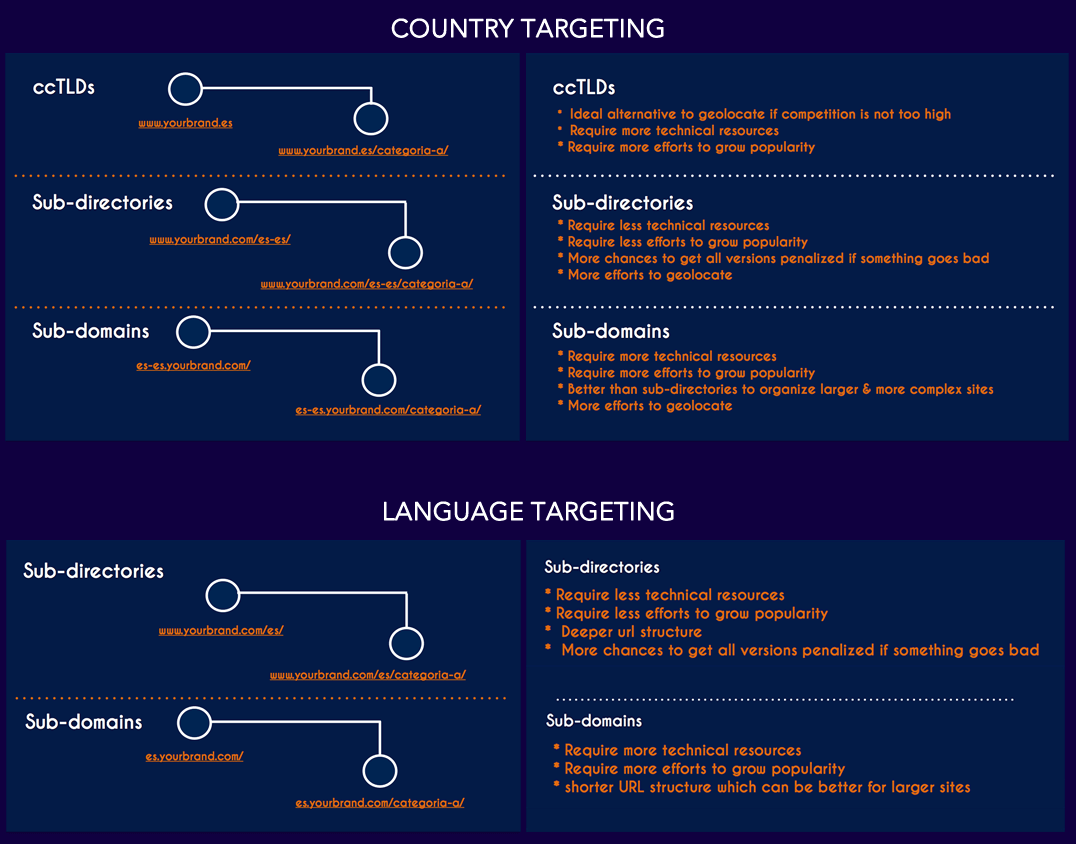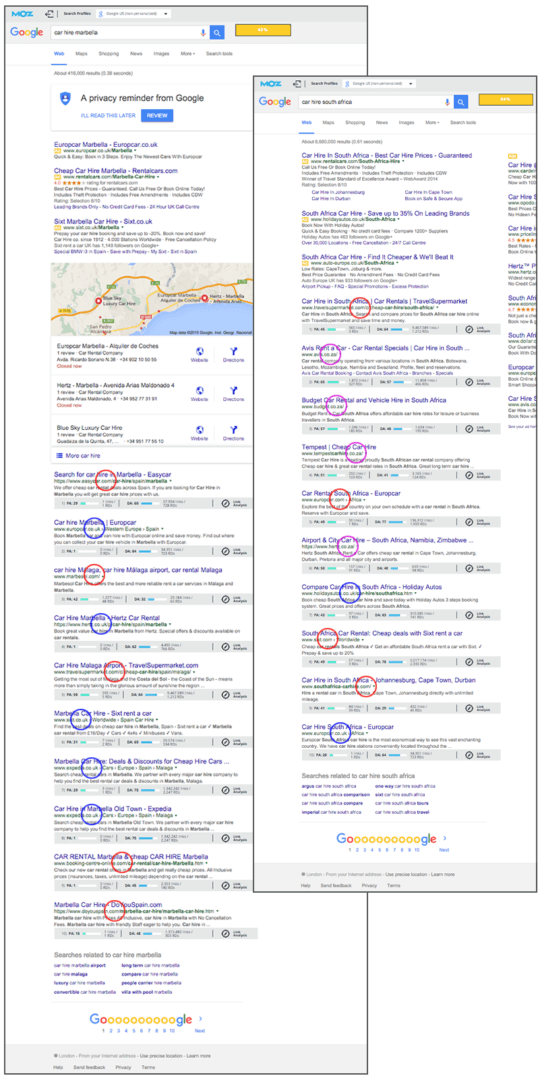5 Questions To Select The Right Structure For Your International Websites
You want to launch your business in a new market. What Web configuration should you use to maximize SEO benefit? Columnist Aleyda Solis poses five questions to help you determine which is right for you.

The most frequent question I am asked, both online and off, is:
“What’s the best Web structure for my international site?”
This question might seem quite basic and fundamental, but unfortunately, there is no clear-cut “right” answer. Although there are general best practices, the truth is that if you’re in a relatively competitive industry, the selection of the best international Web structure should take more into consideration than what Google suggests.
The structure you choose should be based on your specific needs, your current status and your competition within your targeted markets. It’s important to consider all these factors, as you can end up creating more challenges in your international SEO process or completely risking your international SEO success if your selection is not the best one.
Here are the factors I take into consideration to give the best possible recommendation for every situation, by asking these questions:
1. Are You Country Or Language Targeting?
This should always be the first question to answer in any international SEO process: How will you target (or how are you currently targeting) your international audience? By language? By country?
Many businesses are not completely clear on this, which can cause issues with international SEO implementation. It’s the reason websites end up trying to target France’s audience with a subdirectory in a UK country code top-level domain (ccTLD) or by featuring flags in their language-targeted Web versions (as if they were country targeting).
Although ideally, the best way to target any audience is to do it at the most granular and personalized level (which in this case would be to country target), the truth is that there are some situations where country targeting is not the best option:
- When location might not be such a critical factor in your business operation and model. For example, location might be less critical for a technology blog with a business model based in advertising or an SaaS company than for an e-commerce or real estate site. For example, Atlassian and Skype have language, not country, targeting for their international Web versions.
- When your audience is distributed across many different countries speaking the same language. Ideally, you would localize for each country — but initially, you might not have a critical mass of potential users and search volume to justify separate website versions for each location. It’s important to develop keyword and audience research and use the data to identify the expected traffic and ROI per country (for which I created a calculator) to assess the viability of enabling a country-targeted version. In some situations, it would make sense to start by targeting language to “test the waters” and verify growth trends in some countries; once a country reaches a certain level of traffic and conversions, you can launch a specific Web presence targeting that country.
Although you could be completely country or language targeting, the reality is that at the beginning, you might have a mixed approach: country target your most important markets, language target others. What’s fundamental, though, is that you know very well how you’re targeting your international markets and why you have chosen the type of target you have selected; this will be the first and the most fundamental criterion to take into consideration when selecting your international Web structure:
- For country targeting: You can choose between ccTLDs or subdirectories or subdomains that you can individually geolocate using the Search Console.
- For language targeting: You can choose between subdirectories or subdomains in gTLDs.
For any of these options, it’s a good practice when targeting many countries and languages to use hreflang annotations in order to make sure the right version of a page is shown to the desired international audience in search results. This is especially true when you have many versions in the same language targeting different countries.
Each potential implementation has pros and cons, and you shouldn’t just blindly select an implementation without thinking it through.
For example, although ccTLDs are the “ideal” option to country target, a brand-new domain with no link profile may require much more effort to grow in popularity and thus might not be the best option for a competitive market. In cases like these, it’s necessary to assess more information about the targeted international search markets.
On the other hand, subdirectories for language targeting might also seem the best option. Yet this option may carry more risks if you’re in a sector or market where you’re more liable to be spammed or penalized, as this could end up hurting your whole domain as a consequence.
This is why it’s necessary to answer additional questions that will give you insights into the markets you are targeting. Determining how you plan to target (by country, language or some combination thereof) is an essential first step in selecting the best international implementation for your website.
2. How Are You Already Performing In Relevant Markets?
It’s important to understand your starting point in your desired international target markets. Your ideal Web structure could change based on the current rankings, traffic and authority you have with your current site in your targeted markets — especially if you have already established an international Web structure for them.
To identify this, you can answer the following questions:
- What’s the current Web structure for your already existing markets? If you’re country targeting at the moment: Are you using a ccTLD for your local market or a .com?
- Do you have already any type of international Web presence? If so, what type of Web structure does this international presence have?
- What’s the current search visibility, traffic and conversions of your already existing international Web presence (or your current site for the international markets you want to target)? Are you already ranking well for certain keywords? Do you already have an internationally targeted Web structure with non-trivial link popularity?
- What’s causing your current Web presence — targeted or not — to perform as it is in your international markets?
For example, if you have a current ccTLD targeted towards your existing local market and nothing else, then the possibility of enabling a subdirectory that leverages your current domain link popularity is eliminated; if you’re targeting another country or a language worldwide, you won’t be able to effectively target and rank with a subdirectory on an irrelevant ccTLD.
On the other hand, if you already have a high-authority gTLD that is ranking for a few queries in your international markets without even being optimized or with subdirectories targeting them, you might be able to leverage it based on the next step’s results.
I’ve also seen a number of situations when there’s already a well-established ccTLD ranking for non-trivial queries in their targeted markets, and the reason for assessing a change is to identify opportunities to simplify the website’s management and operative costs. So, in this case, it is important to identify how visible, established and profitable the current Web structure is and if it will be worth it to migrate it to another one.
3. What’s The Web Structure Of The Top Sites In Your Targeted Markets?
Use SimilarWeb “Industry Analysis” to list the top overall sites of your desired countries’ and sectors’ markets, as well the top ones specifically in search, in order to identify the Web structure of the best-performing and most popular sites. Is having a ccTLD correlated with the best ranking and overall most popular sites? What’s the percentage of the top sites with gTLDs?
Extend this validation by using services like impersonal.me or I Search From to simulate your search from your targeted international markets, or ideally, a proxy to search from a local IP directly, and verify the Web structure of the top-ranking sites for the most popular and relevant queries. This can change a lot even in the same sector, between queries.
For example, you can see the difference between the sites ranking for “car hire Marbella” in the UK, where half of them are ranking are gTLDs and the other half are UK ccTLDs. But, for “car hire South Africa,” only two of the sites ranking have a UK ccTLD, four have a South Africa ccTLD and the other four have a gTLD.
Is it then a must to verify for your most important international queries if it would be viable to rank in top positions with a gTLD or if the already ranking sites are only or mostly local ccTLDs?
4. What’s The Link Popularity Of The Top Sites In Your Targeted Markets?
Besides identifying and analyzing the Web structure of the top-ranking sites targeted for your main queries in your international markets, be sure to investigate their link profiles, as well.
In addition to the overall popularity at a domain and page level, look at what percentage of links are coming from local sites — with local ccTLDs and IPs — versus gTLDs. How natural are these links? You can use Open Site Explorer or Majestic or simplify the analysis with tools like CognitiveSEO.
It’s important to identify the link popularity gap that you would have in case you start with a completely new ccTLD or (in case gTLDs are also ranking for your top queries) by using subdirectories in your existing gTLD. This will help you assess how feasible it is to rank with one configuration versus another (and the level of difficulty you would have in doing so).
If you have seen that most of the ranking sites are ccTLDs with a lower level of authority, then it might be feasible to start directly with a ccTLD with no or very low link profile; however, if the link popularity gap is too big, you might want to consider using a gTLD if these are ranking in top positions in these markets.
5. What’s The Influence Of Having A Localized Domain vs. A Generic One In The User Behavior?
This question isn’t always possible for you to answer, as it requires access to search visibility and traffic data for sites already ranking in your targeted countries and sectors. In the event that you’re not starting from scratch and/or have access to data of sites targeting to the same countries, languages and industries, it’s definitely worthwhile to analyze the influence of cultural factors and preferences of your international audience when it comes to choosing ccTLDs vs. gTLDs. You can even test these by launching pilot projects with only the top site pages.
Keep in mind that a site’s performance can be affected not only by the specific characteristics of your targeted countries but also by the visibility and authority of the brand you’re working with locally; if it’s a branded or non-branded query; if it’s a mobile or desktop result; the number of ads shown; and organization of the SERPs, among other factors.
Thus, it isn’t advisable to simply generalize and expect to draw accurate conclusions from market to market or business to business just with this data. Still, it’s worthwhile to take a look if you have firsthand data, to identify potential patterns.
For this step, you can use the “Search Analytics” report in Google Search Console and use the filter to select specific pages and queries for which these pages rank, to identify their click-through rate (CTR) vs. position difference from country to country. See if there’s a correlation between having a higher CTR with the exact same position, page and query just because of using a local ccTLD vs. a gTLD.
For example, you can see here how the CTR changes when using a .com gTLD across the US, UK and Australia. In Australia, despite having a better position than in the US for the exact same page and query, it doesn’t result in a higher CTR.
If the same happens across many pages and queries, and the search result pages in these countries are similar (in terms of layout and number of ads), then it could point to a potential impact in the user behavior for that specific country. That can end up giving you the last insight you needed to avoid the usage of gTLD in this specific country, especially if you have also seen that most of the top sites in that country are ccTLDs.
Although it would be difficult to draw complete conclusions just by using this data, it can provide additional insight in your analysis to make a final decision.
It’s Time To Answer These Questions And Select The Best International Web Structure For Your Site!
By answering the questions above, you’ll be able to make a much more informed decision when selecting the best international Web structure in your specific situation — one that can effectively perform in your desired markets and that’s flexible to grow and scale over time.
Do you use any additional data or research to make this decision? Feel free to share!
Photo by Alexander Kaiser of pooliestudios.com.
Contributing authors are invited to create content for Search Engine Land and are chosen for their expertise and contribution to the search community. Our contributors work under the oversight of the editorial staff and contributions are checked for quality and relevance to our readers. The opinions they express are their own.
Related stories
New on Search Engine Land




